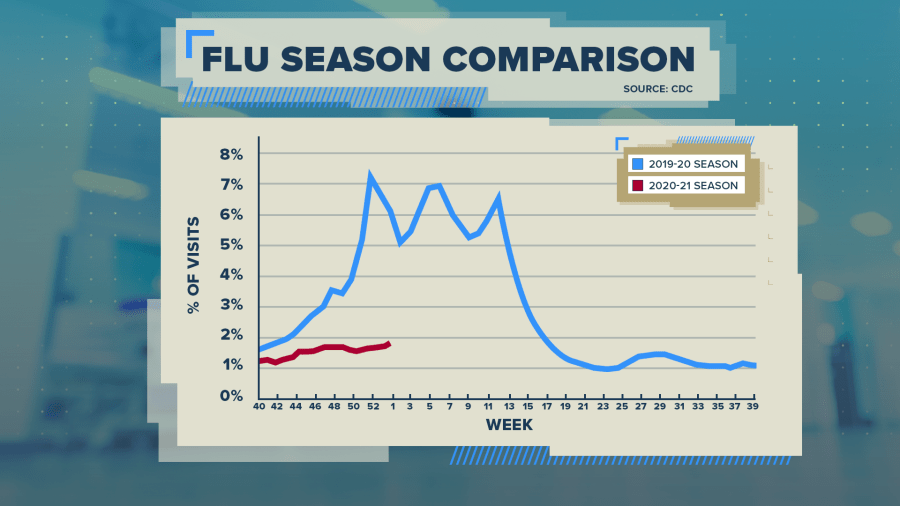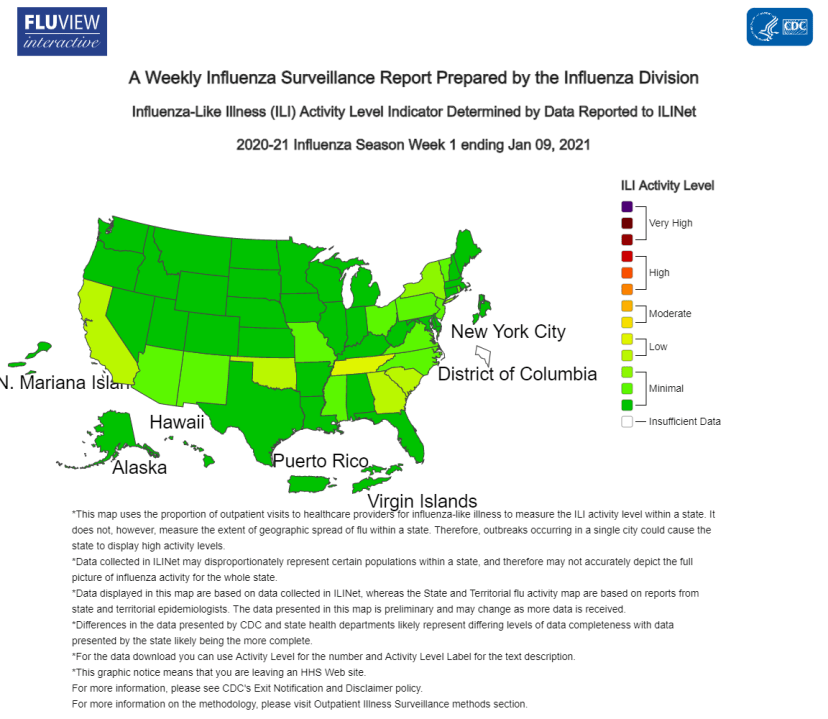What happened to the flu this season?
DALLAS (NewsNation Now) — As coronavirus cases keep climbing, doctors say they’ve noticed drastically fewer flu cases this season.
There were concerns before flu season started about a “twindemic,” but health experts say that hasn’t happened.
Patient visits to a health care provider for flu symptoms are way below last year, according to the Centers for Disease Control and Prevention.
Just 1.7% of visits were reported this week compared to more than 5 percent during this same week last year.

NewsNation crunched the numbers from the CDC, and flu cases have plummeted nationwide this season. Typically, flu cases peak between December and February, but with a pandemic still in play, experts say COVID-19 has kept other seasonal viruses at bay.
It was only a few months ago — late summer — when health experts warned of a looming ‘twindemic.’
“We’re recommending that everyone wear masks,” said Dr. William Schaffner with Vanderbilt University back in the Fall. “Of course, you’ve all heard that because of COVID, but masks will also help us protect against influenza.”
The potential double-whammy of the flu and COVID-19 launched a nationwide campaign for the flu shot like we’d never seen before.
“You’re not sure if you’re having a sore throat, or a temperature or if it’s the coronavirus, or maybe the flu?” said one CVS patient walking in to get her flu shot last year.
But fast forward to January, and it seems the United States has ducked the duo. COVID, of course, remains rampant with the national death toll reaching 400,000 this week.
Influenza, however, has all but vanished.
“And it really speaks to the fact that COVID is far more contagious than influenza is,” said infectious disease expert Dr. David Priest in North Carolina. “Some masking, some hand washing, some social distancing is really enough to significantly cut down on influenza.”
According to data from the CDC, between September and January of the 2019 flu season, the United States reported about 65,000 cases. In that same time frame in 2020 — only 1,016. Last season, 195 children died from the flu. So far this season? One child death.

Doctors and health care providers crediting pandemic safeguards with keeping other seasonal viruses at record lows. But with similar symptoms, how do you tell the difference?
“Most of the time with the flu, you’re going to have a lot of body aches, chills. But with the coronavirus, we’re seeing people come in with a shortness of breath, loss of taste and sense of smell,” said Texas-based family medicine physician Dr. Kirk Tiemann.
Numbers from the CDC also show that just over half of Americans received their flu vaccine last season. It was 175 million doses that shattered records. So far this season, almost 193 million doses have been administered and it is only January. Health experts still recommending getting your flu shot and the COVID-19 vaccine if you are eligible. They say those are still your best chance of personal protection this year.
Dr. Lisa Ravindra from Rush University Medical Center in Chicago. She says she’s seen basically no flu cases this season. Watch the discussion in the player below.










